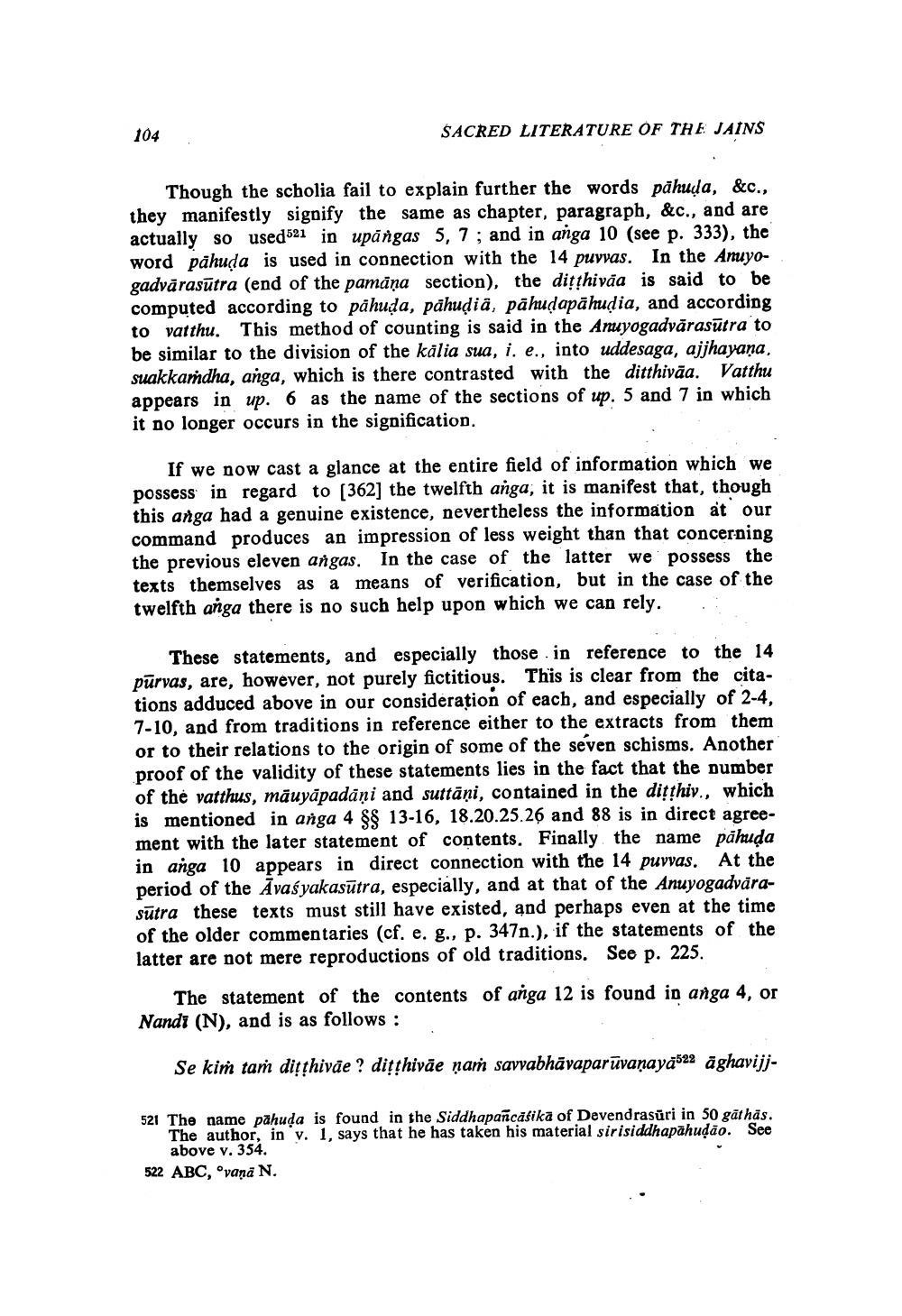________________
104
SACRED LITERATURE OF THE JAINS
Though the scholia fail to explain further the words pähuda, &c., they manifestly signify the same as chapter, paragraph, &c., and are actually so used521 in upāngas 5, 7 ; and in anga 10 (see p. 333), the word pähuda is used in connection with the 14 puyvas. In the Anuyogadvārasūtra (end of the pamāņa section), the dițțhivaa is said to be computed according to påhuda, pähudiä, pähudapāhudia, and according to vatthu. This method of counting is said in the Anuyogadvārasūtra to be similar to the division of the kālia sua, i. e., into uddesaga, ajjhayana, suakkaṁdha, anga, which is there contrasted with the ditthivāa. Vatthu appears in up. 6 as the name of the sections of up. 5 and 7 in which it no longer occurs in the signification.
If we now cast a glance at the entire field of information which we possess in regard to [362] the twelfth anga, it is manifest that, though this anga had a genuine existence, nevertheless the information at our command produces an impression of less weight than that concerning the previous eleven angas. In the case of the latter we possess the texts themselves as a means of verification, but in the case of the twelfth anga there is no such help upon which we can rely.
These statements, and especially those in reference to the 14 pūrvas, are, however, not purely fictitious. This is clear from the citations adduced above in our consideration of each, and especially of 2-4, 7-10, and from traditions in reference either to the extracts from them or to their relations to the origin of some of the seven schisms. Another proof of the validity of these statements lies in the fact that the number of the vatthus, māuyāpadani and suttāni, contained in the ditthiv., which is mentioned in anga 4 $$ 13-16, 18.20.25.26 and 88 is in direct agreement with the later statement of contents. Finally the name pāhuda in anga 10 appears in direct connection with the 14 puvvas. At the period of the Āvaśyakasūtra, especially, and at that of the Anuyogadvarasūtra these texts must still have existed, and perhaps even at the time of the older commentaries (cf. e. g., p. 347n.), if the statements of the latter are not mere reproductions of old traditions. See p. 225.
The statement of the contents of anga 12 is found in anga 4, or Nandi (N), and is as follows:
Se kiṁ taṁ dițțhivāe ? dițțhivāe naṁ savvabhāvaparūvaņayā522 aghavijj
521 The name pāhuda is found in the Siddhapancašika of Devendrasuri in 50 gāthas.
The author, in v. 1, says that he has taken his material sirisiddhapähudão. See
above v. 354. 522 ABC, vana N.




